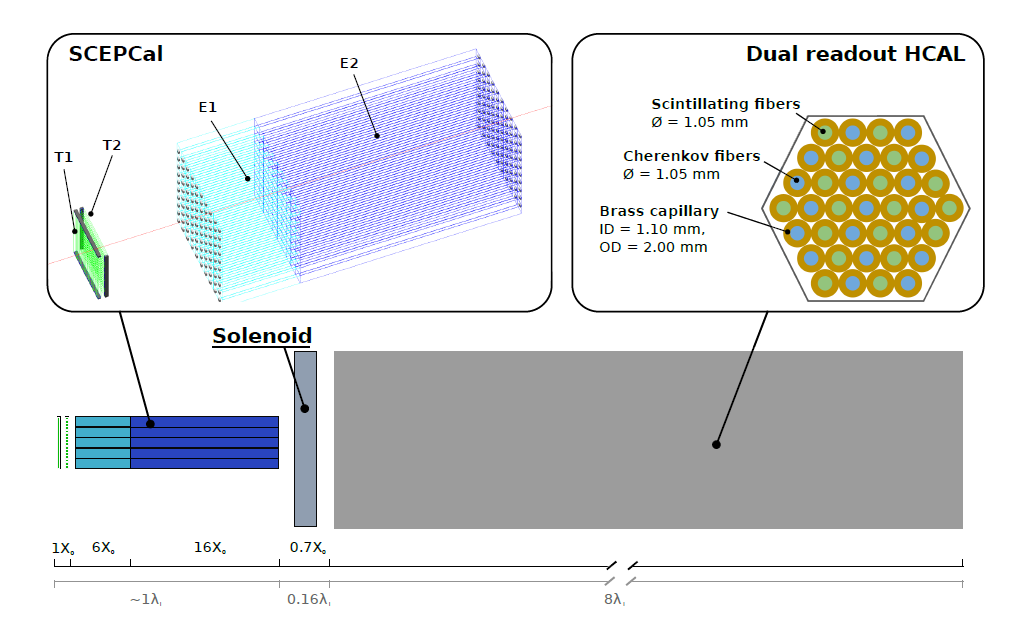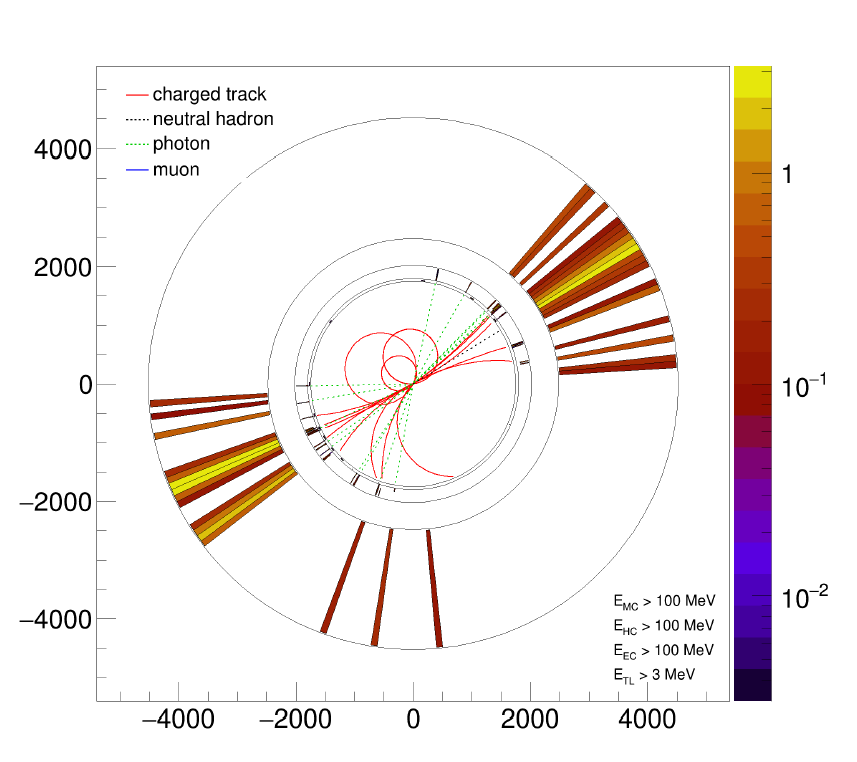Sarah Eno, Alberto Belloni, Nick Hadley, Andris Skuja and Drew Baden, along with UMD Physics students and postdocs, were among the contributors to the LHC achievement.
 A full calorimetry system for a collider detector. The crystal ecal is shown in blue and purple and is labeled E1 and E2.To continue studying the Higgs boson and its role in the universe, scientists are planning the construction of the next great collider, a “Higgs factory”. The US particle physics community uses the Snowmass planning process to identify and direct research priorities. UMD’s Zohreh Davoudi, Manuel Franco Sevilla and Alberto Belloni are leading the writing of various chapters in the next Snowmass report, which will describe in detail (among other things) the compelling need to make very precise measurements of the properties of the Higgs boson.
A full calorimetry system for a collider detector. The crystal ecal is shown in blue and purple and is labeled E1 and E2.To continue studying the Higgs boson and its role in the universe, scientists are planning the construction of the next great collider, a “Higgs factory”. The US particle physics community uses the Snowmass planning process to identify and direct research priorities. UMD’s Zohreh Davoudi, Manuel Franco Sevilla and Alberto Belloni are leading the writing of various chapters in the next Snowmass report, which will describe in detail (among other things) the compelling need to make very precise measurements of the properties of the Higgs boson.
Existing and planned particle detectors cannot do precision measurements of both electrons/photons (which interact primarily via the electromagnetic force) and hadrons (bound states of quarks that interact mostly via the strong force). For future large colliders, Eno, along with Chris Tully of Princeton University and Marco Lucchini of Università degli Studi di Milano-Bicocca, recently proposed a dual-readout crystal electromagnetic calorimeter. The idea builds on earlier work for the DREAM/RD50/IDEA collaborations, but will utilize machine learning, novel particle reconstruction algorithms and new types of photodetectors, allowing excellent resolution for all types of particles and a clearer understanding of the Higgs boson. Typical Z to dijet event, showing charged tracks in the tracker, hits in the electromagnetic calorimeter, and then hits in the spaghetti-type dual-readout section.
Typical Z to dijet event, showing charged tracks in the tracker, hits in the electromagnetic calorimeter, and then hits in the spaghetti-type dual-readout section.
The Department of Energy’s Instrumentation Frontier program recently awarded $1.4 million over three years for design of the new device, with Eno as Principal Investigator. Eno will lead a collaboration from Princeton, the University of Virginia, Texas Tech University, Caltech, the University of Michigan, MIT, Purdue, University, Argonne National Laboratory, Oak Ridge National Laboratory, and Fermi National Accelerator Laboratory. Scientists from Italy and South Korea are also participating.
Eno, whose research has focused on precision studies of the properties of the W boson, tests of QCD using Z bosons, and searches for exotic particles predicted by theories of physics beyond the Standard Model, has long worked on calorimeters, specifically in measuring the momentums of jets and missing transverse energy and studies of radiation damage to their plastic components. She is a UMD Distinguished Scholar-Teacher and a Fellow of the American Physical Society and the American Association for the Advancement of Science.
The Snowmass submission outlining calorimeter aspirations, with Eno as lead author, can be found here: https://arxiv.org/abs/2203.04312